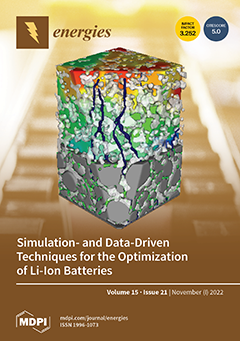In this study, the entropy formation of an electromagnetohydrodynamic hybrid nanofluid at a stagnation point flow towards a stretched surface in the presence of melting heat transfer, second-order slip, porous medium, viscous dissipation and thermal radiation are investigated. Hybrid nanoparticles alumina (Al
2
[...] Read more.
In this study, the entropy formation of an electromagnetohydrodynamic hybrid nanofluid at a stagnation point flow towards a stretched surface in the presence of melting heat transfer, second-order slip, porous medium, viscous dissipation and thermal radiation are investigated. Hybrid nanoparticles alumina (Al
2O
3) and copper (Cu) are considered, with the base fluid water (H
2O). Similarity transformations are used to address the governing partial differential equations (PDEs) that lead to the corresponding ordinary differential equations. The resulting ODEs are solved by employing bvp4c solver numerically in the MATLAB package. The effects of temperature, transport, production of entropy and Bejan number
are graphically exhibited. Higher radiation parameters
and an electric field
lead to an increase in fluid temperature. The velocity boundary layer is lowered by the magnetic field and porous media parameters. The opposite behaviour is observed in the electric field
. As a result, hybrid nanofluid has numerous uses in engineering cosmetics, automotive industry, home industry, for cancer treatment, food packaging, pharmaceuticals, fabrics, paper plastics, paints, ceramics, food colorants, electronics, heat exchangers, water purification, lubricants and soaps as well.
Full article





